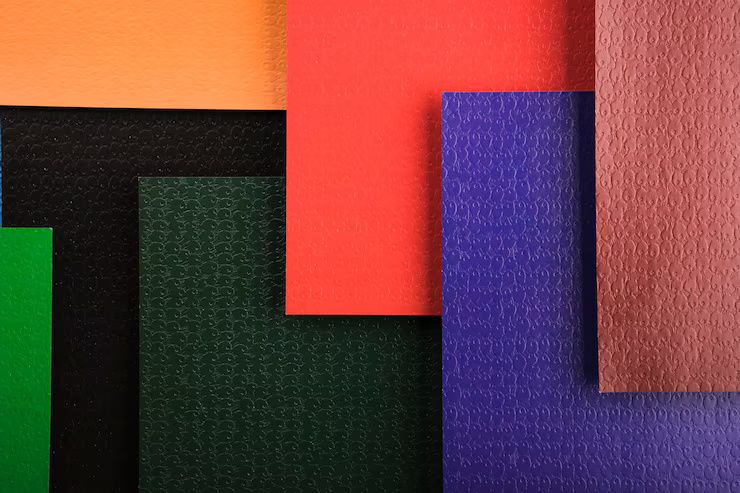Rubber sheets are flat, flexible layers made from natural or synthetic rubber. They serve as essential components in a variety of industrial, commercial, and domestic applications. Commonly used for insulation, sealing, flooring, vibration damping, and gasketing, rubber sheets offer durability, elasticity, and resistance to heat, chemicals, and abrasion.
These sheets come in various materials like natural rubber, neoprene, EPDM (ethylene propylene diene monomer), silicone, and nitrile. Each type is chosen based on the intended use and environmental exposure.

Why Rubber Sheets Matter in Today’s World
Rubber sheets are vital across many sectors:
-
Industrial Manufacturing: Used in machines to reduce friction and noise.
-
Automotive Sector: Gaskets, seals, and mats rely on rubber sheets.
-
Construction: Provide sound insulation and waterproofing.
-
Healthcare & Food: Medical-grade and FDA-approved rubber sheets are used in clean environments.
-
Home Use: Found in yoga mats, anti-slip flooring, and electrical insulation.
Key benefits include:
-
Flexibility and moldability
-
Resistance to water, oils, and chemicals
-
Electrical and thermal insulation
-
Longevity in challenging environments
They help solve problems related to leakage, vibration, and thermal insulation while being cost-effective and easy to install.
Recent Developments and Trends in Rubber Sheets (2024–2025)
In the past year, several changes and innovations have emerged:
-
Eco-Friendly Rubber: Growing use of recycled and biodegradable rubber sheets in green building projects (2024).
-
Flame-Resistant Variants: Enhanced fire-retardant sheets for aerospace and rail applications.
-
Hybrid Composites: Combinations of rubber with cork or metal for improved performance in industrial environments.
-
Antimicrobial Rubber Sheets: Used in hospitals, labs, and food-processing units, offering improved hygiene (Q1 2025).
-
Digital Customization: Manufacturers now offer CAD-based customization for sheet thickness, pattern, and cut size.
These developments reflect growing demand for safety, sustainability, and high-performance materials.
Laws and Regulations Governing Rubber Sheet Usage
Regulatory compliance varies based on the application of rubber sheets:
-
REACH and RoHS (EU): Ensure that rubber products are free of harmful substances like lead or phthalates.
-
FDA Compliance (US): Required for rubber used in food processing or medical environments.
-
ASTM Standards: Specify testing for properties like tensile strength, hardness, and resistance.
-
BIS Standards (India): Mandate quality standards for industrial rubber sheets under IS codes.
-
ISO 3302-1: Defines dimensional tolerances for rubber products globally.
These standards help ensure product safety, quality, and environmental compliance across industries.
Helpful Tools and Resources for Rubber Sheet Selection
Whether you're purchasing, specifying, or using rubber sheets, the following tools and platforms are useful:
Online Tools and Calculators
-
Rubber Sheet Thickness Calculator – Helps determine required thickness based on application.
-
Material Compatibility Checker – Identifies the best rubber type for exposure to oils, chemicals, or heat.
Websites and Databases
-
Matmatch (www.matmatch.com): Compare rubber material properties.
-
Thomasnet and IndiaMART: Directories to find certified manufacturers and suppliers.
-
ASTM and ISO Portals: Access technical standards and compliance details.
Learning Resources
-
Coursera / edX Courses: Engineering and materials science courses explain rubber characteristics.
-
Rubber Division, ACS: Technical papers and events for rubber professionals.
Frequently Asked Questions About Rubber Sheets
Q1. What are the most common types of rubber sheets?
Natural rubber, neoprene, EPDM, silicone, nitrile, and SBR (styrene-butadiene rubber) are commonly used depending on specific needs like oil resistance or weather exposure.
Q2. How are rubber sheets sized and sold?
They are typically sold in rolls or cut sheets. Standard widths range from 1 to 2 meters and thicknesses from 1 mm to over 50 mm.
Q3. Are rubber sheets heat-resistant?
Yes. Silicone and EPDM rubber sheets can withstand high temperatures, often up to 200°C or more.
Q4. Can rubber sheets be recycled?
Yes. Recycled rubber sheets are increasingly used in flooring, mats, and industrial padding, contributing to sustainability.
Q5. How do I choose the right rubber sheet for my application?
Consider factors like exposure to heat, chemicals, oils, weather, or pressure. Consult datasheets or use compatibility tools.
Final Thoughts
Rubber sheets are silent yet essential materials used across a spectrum of industries and households. From high-tech engineering to everyday flooring, their resilience, versatility, and cost-effectiveness make them indispensable.
Staying informed about types, compliance requirements, and technological upgrades helps users select the right product for the right purpose. As industries shift toward more sustainable and specialized materials, rubber sheets continue to evolve to meet those demands.
